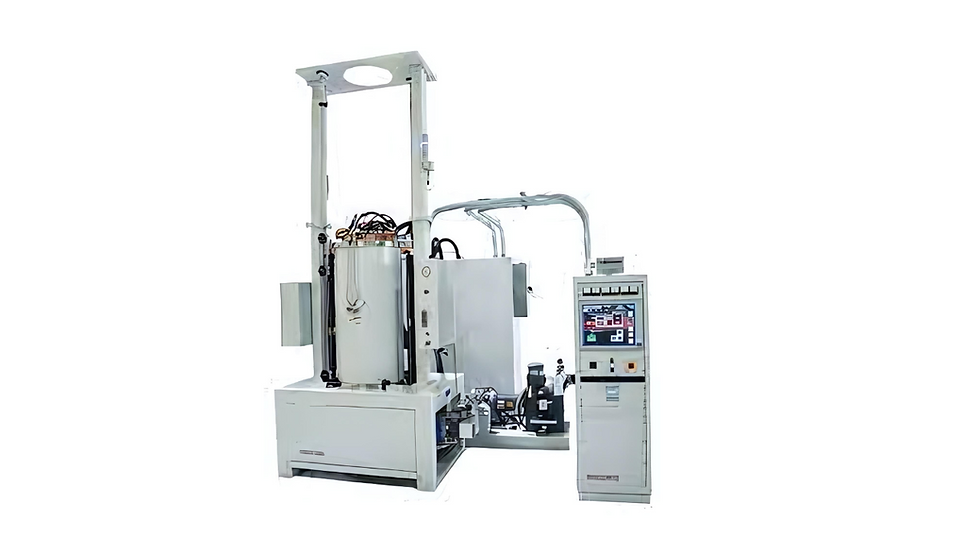Which Roughing Pump Is Right For My Application? An In-Depth Exploration
- dayvette2022
- Feb 17, 2024
- 3 min read

In the vast and varied world of vacuum technology, one question often stands out in the minds of professionals and hobbyists alike: "Which Roughing Pump Is Right For My Application?" This isn't just a question; it's a journey to finding the perfect companion for your vacuum needs. Whether you're in the realm of industrial manufacturing, scientific research, or any field requiring a solid vacuum solution, the right roughing pump is out there waiting for you. Let's embark on this exploration together, ensuring we cover every nook and cranny to find your ideal match.
What are Roughing Pumps
Roughing pumps, the unsung heroes of vacuum applications, come in various shapes and sizes, each with unique features catering to different needs. These pumps are the first step in creating a vacuum, setting the stage for more refined processes. Let's dive deeper into the types of roughing pumps:
Rotary Vane Pumps: The workhorses of the vacuum world, offering reliable performance for a wide range of vacuum levels. Their robust design makes them a go-to for many industries.
Dry Scroll Pumps: Featuring a design that eliminates the need for oil in the vacuum process, these pumps are perfect for applications where purity is paramount.
Diaphragm Pumps: With their oil-free operation and resistance to corrosive materials, diaphragm pumps are ideal for sensitive environments.
Key Considerations Before Choosing a Roughing Pump
Selecting the right roughing pump for your application is a pivotal decision that can significantly impact your process's efficiency and effectiveness. Here are the key considerations:
Capacity and Performance Needs
The capacity of a pump and its ability to reach the desired vacuum level are critical. It's essential to understand the specifications of each pump type and match them with the requirements of your application.
Application Requirements
Every application has its unique challenges, whether dealing with corrosive materials or needing an oil-free environment. Identifying these requirements early on is crucial in selecting the right pump.
Physical and Operational Constraints
Space limitations, noise sensitivity, and the environment in which the pump will operate can all influence your choice. Additionally, the ease of maintenance and the pump's longevity are factors that should not be overlooked.
Budget and Cost of Ownership
While the upfront cost is an important consideration, the long-term operating expenses, including energy consumption and maintenance costs, can make a significant difference in your choice of pump.
Which Roughing Pump Is Right For My Application?: A Detailed Guide
In the quest to answer the question, "Which Roughing Pump Is Right For My Application?" a thorough analysis of your specific needs is required. This section aims to guide you through selecting the ideal roughing pump for your application, ensuring a match made in vacuum heaven.
Analyze Your Application's Needs: Begin with a detailed assessment of your vacuum requirements. Consider the level of vacuum you need and the type of material the pump will handle. Frequency and duration of use also play a crucial role in your decision.
Compare Roughing Pump Types for Specific Applications:
We're expanding our comparison table to include more applications and pump types:
Application Area | Suggested Pump Type | Why? |
Industrial Manufacturing | Rotary Vane Pumps | Versatile, durable, and suitable for a broad range of needs |
Scientific Research | Dry Scroll Pumps | Precision and oil-free operation for sensitive experiments |
Semiconductor Production | Dry Scroll/Diaphragm | Clean, contamination-free environment is crucial |
Food Packaging | Diaphragm Pumps | Ensures a hygienic process without oil contamination |
Chemical Processing | Diaphragm/Rotary Vane | Chemical resistance and robust operation |
HVAC System Maintenance | Rotary Vane Pumps | Efficient at achieving deep vacuums for system testing |
By expanding on the types of applications and the recommended pump types, we hope to provide a clearer path to answering "Which Roughing Pump Is Right For My Application?" for a broader audience. Whether you're drying food packaging or creating semiconductors, the key is to align your specific needs with the features and capabilities of the roughing pump.
Maintenance and Troubleshooting Tips for Roughing Pumps
To ensure your roughing pump continues to serve your application effectively, regular maintenance is key. Here are some expanded tips to keep your pump in top condition:
Rotary Vane Pumps: Regular oil changes are crucial to prevent wear and maintain efficiency. Also, monitor the wear of the vanes and replace them as needed.
Dry Scroll and Diaphragm Pumps: Inspect the seals and bearings regularly for signs of wear. Replacing these components before they fail can prevent downtime and maintain performance.
Troubleshooting common issues often involves identifying symptoms like decreased vacuum performance or unusual noises, which can indicate wear or contamination. Regular checks and maintenance can mitigate these issues, ensuring your pump operates smoothly.
Conclusion
Navigating the question, "Which Roughing Pump Is Right For My Application?" is an intricate process that requires careful consideration of your application's specific needs. By understanding the different types of roughing pumps, their features, and how they align with various applications, you can make an informed decision that ensures the success of your projects.
Remember, the right roughing pump is not just about performance; it's about compatibility with your application's unique requirements. With the insights and guidance provided in this article, we hope to have illuminated the path to finding your perfect roughing pump match. And always remember, consulting with manufacturers or vacuum technology experts can provide additional clarity and confidence in your choice.






Comments